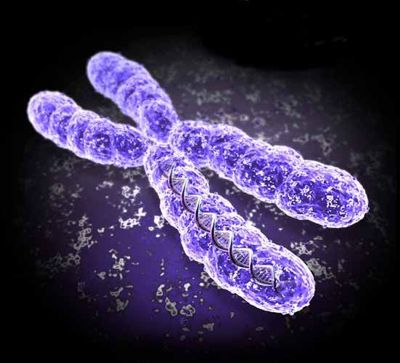Team:Missouri Miners/Safety
From 2011.igem.org
Lordcheeto (Talk | contribs) |
|||
| (6 intermediate revisions not shown) | |||
| Line 1: | Line 1: | ||
| - | {{ | + | {{OrganizationS&T}} |
| - | <div id="box" style="width: 925px; margin-left: 0px; padding: 5px; border: 15px solid #42C555; background-color: #000000;"> | + | |
| - | <div id="template" style="font-weight: regular; font-size: medium; color: silver; padding: 5px;"> | + | <div style="width: 740px; margin: 30px; padding: 10px; background-color: #000000; color: silver; font-size: medium"> |
| + | <h1>Safety </h1><br /> | ||
| + | |||
| + | <!--<div id="box" style="width: 925px; margin-left: 0px; padding: 5px; border: 15px solid #42C555; background-color: #000000;"> --> | ||
| + | <!-- <div id="template" style="font-weight: regular; font-size: medium; color: silver; padding: 5px;"> --> | ||
'''Would any of your project ideas raise safety issues in terms of: | '''Would any of your project ideas raise safety issues in terms of: | ||
''' | ''' | ||
| Line 28: | Line 32: | ||
Future iGEM teams could take many precautions to ensure biosafety is maintained. The easiest step for teams to make would be to use a non-virulent strain of bacteria as their chassis. The teams could take this one step further and mutate their chassis so it becomes auxotrophic for multiple nutrients and can only grow on the provided media. This would ensure that the bacteria will not survive in the environment. Other precautions that teams could make involve preventing unintentional activation of their DNA system. Students could engineer an inducible plasmid so their system only functions when in the presence of a specific drug. Another method to prevent unintentional activation could force the cell to undergo apoptosis and digestion of DNA except under desired conditions. If a cell were to escape into the environment, it would be immediately be destroyed once it leaves the controlled, laboratory conditions. | Future iGEM teams could take many precautions to ensure biosafety is maintained. The easiest step for teams to make would be to use a non-virulent strain of bacteria as their chassis. The teams could take this one step further and mutate their chassis so it becomes auxotrophic for multiple nutrients and can only grow on the provided media. This would ensure that the bacteria will not survive in the environment. Other precautions that teams could make involve preventing unintentional activation of their DNA system. Students could engineer an inducible plasmid so their system only functions when in the presence of a specific drug. Another method to prevent unintentional activation could force the cell to undergo apoptosis and digestion of DNA except under desired conditions. If a cell were to escape into the environment, it would be immediately be destroyed once it leaves the controlled, laboratory conditions. | ||
| + | </div> | ||
Latest revision as of 23:41, 28 September 2011
Safety
Would any of your project ideas raise safety issues in terms of:
- researcher safety,
- public safety, or
- environmental safety?
Our project does not introduce any new parts that could be considered hazardous. Any hazards in our project would be related to working with E. coli. For diabetic patients using our modified E. coli as a blood glucose sensor, coming into contact with the E. coli could be an issue, especially with an open cut. If the system were expanded for use in an insulin pump, steps would have to be taken to ensure that the E. coli could not enter the bloodstream of the patient.
Do any of the new BioBrick parts (or devices) that you made this year raise any safety issues? If yes,
- did you document these issues in the Registry?
- how did you manage to handle the safety issue?
- how could other teams learn from your experience?
Our project did not create any new parts that could be considered hazardous. The promoter is activated by glucose concentrations, and the gene simply produces fluorescence.
Is there a local biosafety group, committee, or review board at your institution?
- If yes, what does your local biosafety group think about your project?
Our institution, Missouri S&T, has an Institutional Biosafety Committee. The committee reviews projects and research regarding DNA synthesis and recombination. This committee is very supportive of our project and has not found any threat to the environment, public, or lab workers present in our research. They caution that if the project were to ever be applied to glucose testing in humans many steps would have to be taken to ensure the safety of the application.
Do you have any other ideas how to deal with safety issues that could be useful for future iGEM competitions? How could parts, devices and systems be made even safer through biosafety engineering?
Future iGEM teams could take many precautions to ensure biosafety is maintained. The easiest step for teams to make would be to use a non-virulent strain of bacteria as their chassis. The teams could take this one step further and mutate their chassis so it becomes auxotrophic for multiple nutrients and can only grow on the provided media. This would ensure that the bacteria will not survive in the environment. Other precautions that teams could make involve preventing unintentional activation of their DNA system. Students could engineer an inducible plasmid so their system only functions when in the presence of a specific drug. Another method to prevent unintentional activation could force the cell to undergo apoptosis and digestion of DNA except under desired conditions. If a cell were to escape into the environment, it would be immediately be destroyed once it leaves the controlled, laboratory conditions.
 "
"






